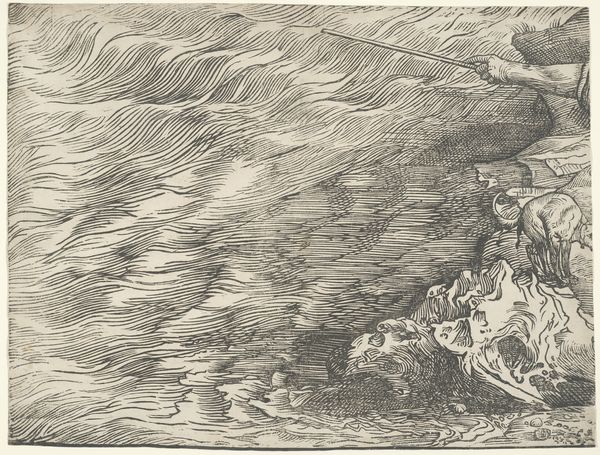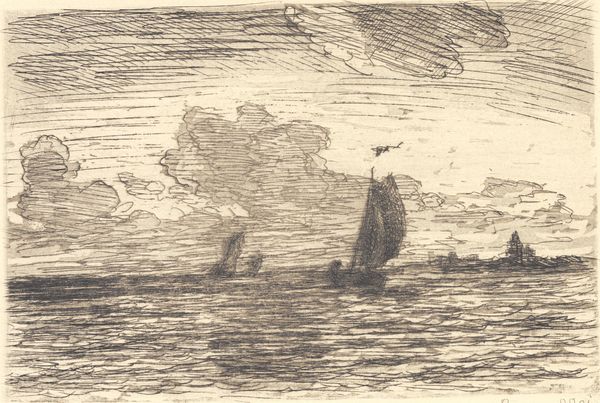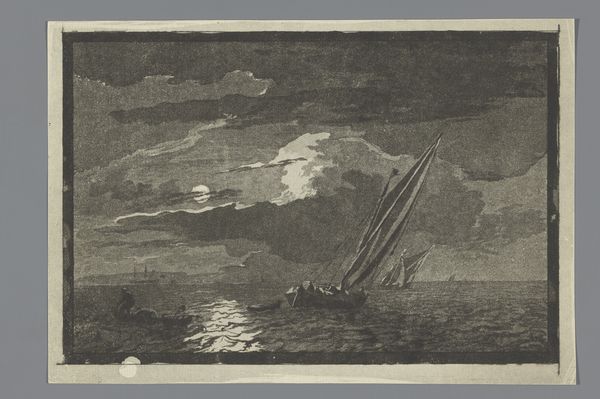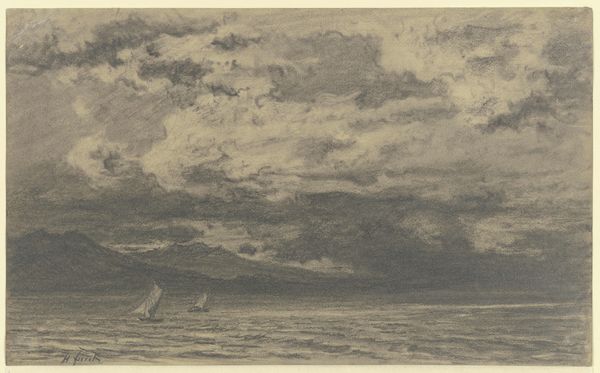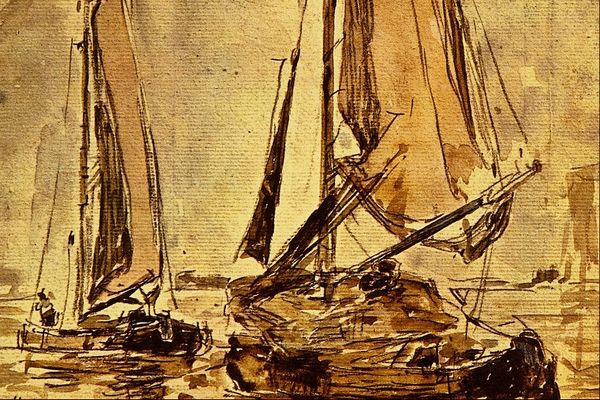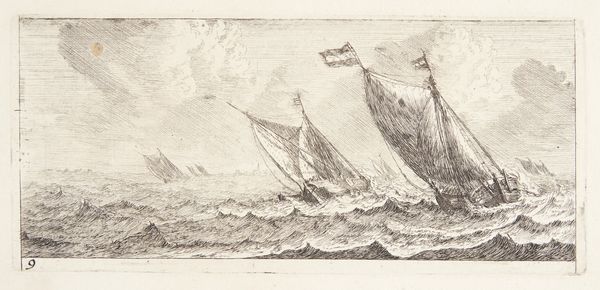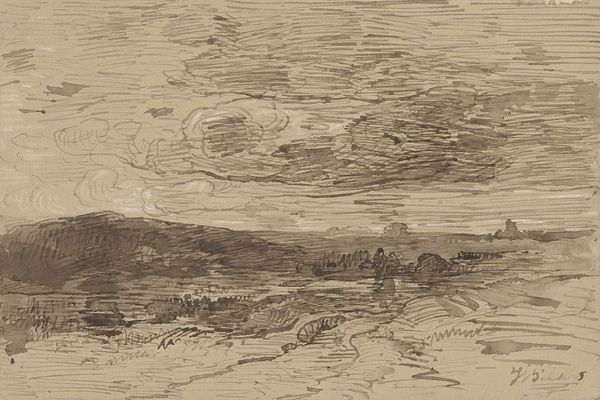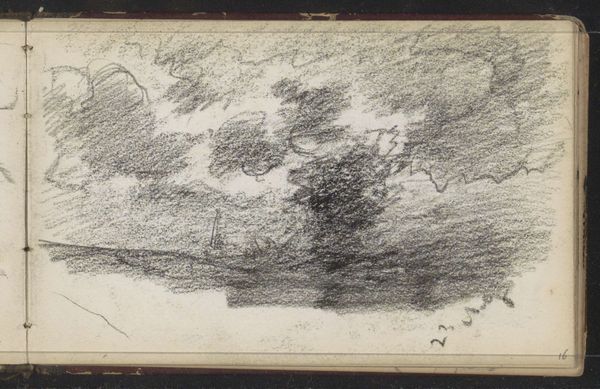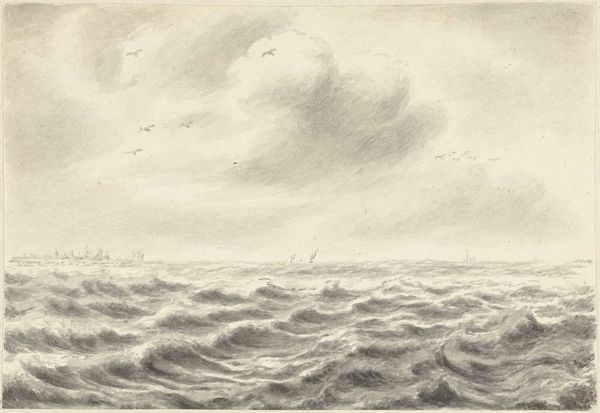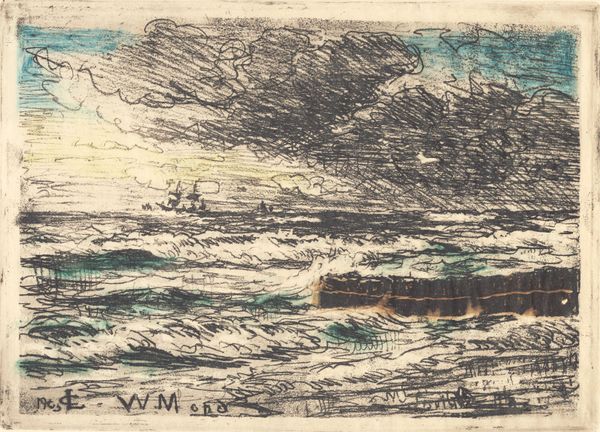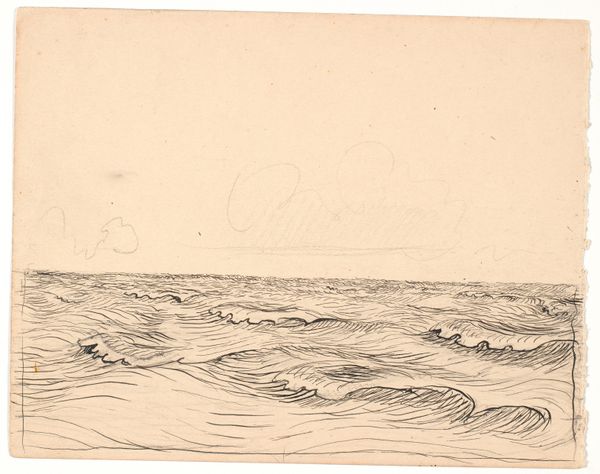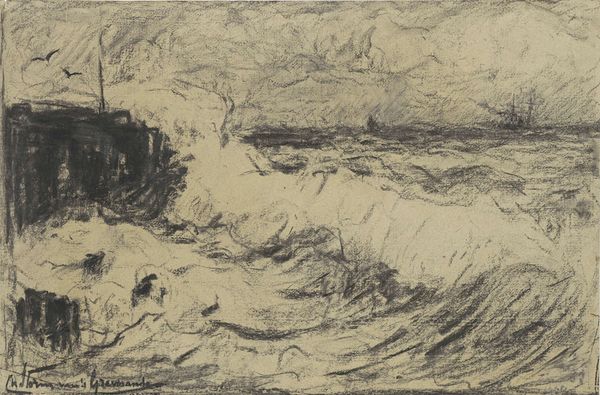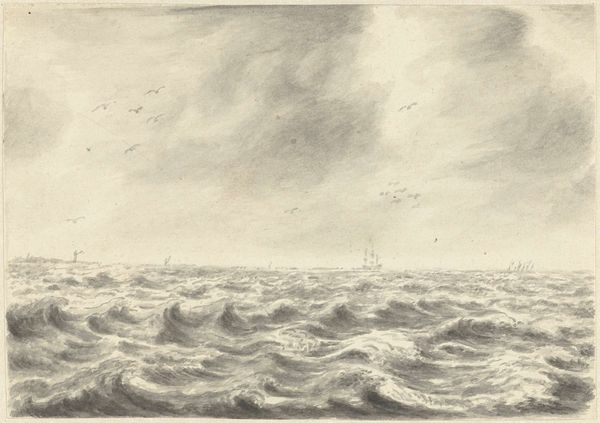
Dimensions: 180 mm (height) x 248 mm (width) (plademaal), 162 mm (height) x 232 mm (width) (billedmaal)
Curator: We’re looking at “Storm ved Tisvilde” by Carl Locher, created in 1903. It is currently held at the SMK, Statens Museum for Kunst. Editor: There's such rawness to the drawing, a wild energy! It evokes the sublime; one can almost feel the damp, salty air and hear the crashing waves. Curator: The piece truly conveys that. The frenetic lines used to render both the turbulent sky and the agitated sea serve as a visual manifestation of the storm’s power. There is this sense of compressed depth where every element seems to push forward. Editor: Right, and speaking of those churning waves, the water rendered with dense, almost frantic mark-making – do they signify something more profound than merely natural phenomena? A premonition of coming conflict maybe, or of the capricious power of the sea over human fate? Curator: Perhaps. But the lines that indicate wave patterns could also just be formal exercises. Locher is interested in line quality throughout—notice the variation in thickness and density creating areas of implied value to produce an overall effect of chiaroscuro despite it just being a print on paper. Editor: Certainly. However, it's tough to ignore how Locher's dramatic stormscape—and a barely visible ship struggling against the elements – carries historical resonance. One senses vulnerability and struggle. Curator: I see that struggle emerging directly from the conflicting line work itself. The diagonal slashes create tension while the more controlled, horizontal lines in the lower section almost futilely attempt to create a sense of order and balance. Editor: So, while it can be read as the power of nature, the piece evokes the fraught human experience on a symbolic level, yes? Curator: Without a doubt. But regardless of the underlying symbolic reading, the dramatic power rests firmly on Locher’s expressive treatment of line. Editor: I see it similarly; both the technical mastery in depiction and symbolic force reflecting raw emotionality. A work that remains timeless due to its aesthetic power.
Comments
No comments
Be the first to comment and join the conversation on the ultimate creative platform.
